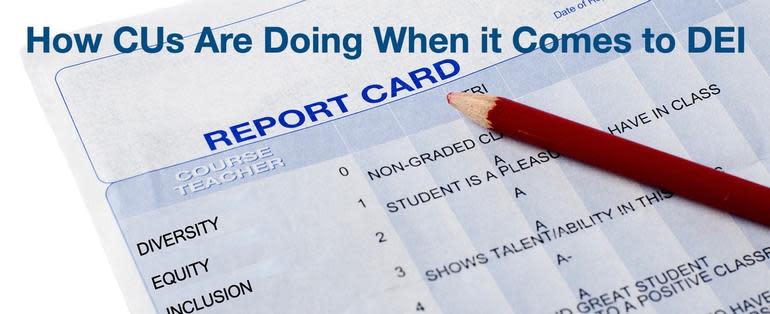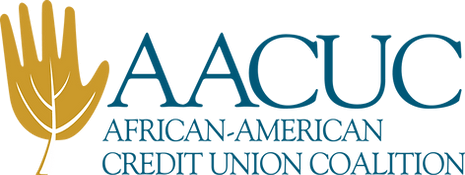DULUTH, Ga.—Diversity, equity and inclusion (DEI) is not a “fad,” and the efforts that have taken root among businesses and in the hearts of Americans to support DEI since the murder of George Floyd at the hands of Minneapolis Police in 2020 are having positive impacts across the nation, says Renee Sattiewhite.
With Black History Month being celebrated in February, the president of the African-American Credit Union Coalition (AACUC) spoke with CUToday.info about the progress being made among credit unions when it comes to DEI, an issue on which she gives the industry a passing grade. However, she added, the key to DEI’s continued success will lie in making the initiative part of an organization’s business plan and giving DEI leaders at CUs the authority to act.
“DEI has got to be part of the credit union’s strategic planning—part of the business plan,” stressed Sattiewhite. “If it's not, then that's what's going to hamper this movement. It will stall out and it won’t be in the forefront as it is now. DEI certainly has to be part of the organization’s goals and strategic direction.”
Varying Efforts
Sattiewhite said incorporating DEI into business plans is taking place within credit unions, but the degree to which it is being emphasized varies greatly.
“Today there are 14 African-Americans leading credit unions larger than $1-billion in assets,” said Sattiewhite. “And of those, four are led by African-American women. I'm truly impressed with the intention and deliberateness within organizations to become more equitable. I get calls and emails weekly regarding positions in the C-suite for African-Americans.”
When it comes to credit unions themselves, the DEI efforts are as unique as credit union memberships, according to Sattiewhite.
“It really depends on the organization. Some are full throttle and some are taking baby steps,” she said.
But regardless of the speed at which a credit union is embedding DEI, it’s become a movement within the movement, according to Sattiewhite.
“Many people predicted that DEI would be a fad, something to appease the colored majority,” said Sattiewhite. “But it is clearly much more than that. Yet through the AACUC lens we still see people very early in their DEI journey taking the minimum, baby steps. Now, I'm encouraged because people are still taking those steps. Unfortunately, there is no industry-wide DEI standard yet, and that's a goal that we're working on.”
Over the past year Sattiewhite believes the momentum behind diversity, equity and inclusion in credit unions may have slowed a bit.
“But, as I said, it is not going to be a fad,” reiterated Sattiewhite, adding efforts to establish higher-level, key positions within credit unions to coordinate DEI programs is a good sign.
It’s Not About the Title
Still, creating these positions is not enough, Sattiewhite emphasized. The roles must have authority.
“The title of the position, manager or VP, is not as important as whether the role has the backing of the CEO and the board of directors,” explained Sattiewhite. “Sometimes, people are being placed in these DEI leadership roles without having any real authority. If the person doesn't directly report to the CEO, then I don't think that’s the strongest use of that individual in that position, and it doesn't signal there's really going to be any lasting change in the organization.
“These people must have the power to make the changes that are needed,” continued Sattiewhite. “If you're going to have a VP or chief of diversity, equity and inclusion it must be someone who has the power to make change happen.”
Whether these roles are receiving that kind of authority is not a question easily answered, she added.
“I couldn't give you a broad-stroke answer. But I would say to get your answer just look at the actions of the organization. What is the organization doing? How are they cultivating their internal staff? How are they reaching out to their external members? What does it look like? In any situation you're going to find people who are overachieving and people who are underachieving.”
Grading Credit Unions
On a 10-point scale, Sattiewhite graded the credit union community as a six when it comes to delivering on DEI promises.
“AACUC’s Commitment to Change Credit Unions United Against Racism initiative has sparked a lot of energy and activity within credit unions,” Sattiewhite said. “But I do think credit unions have the potential to deliver more. We’re not bad, but we are not great yet. I think we can be great. There's so many organizations that are really intentional and doing good work. And then there are some who decide not to do anything at all. I think the more that we have these conversations…”
Sattiewhite, however, doesn’t give the industry high marks for everything.
“Being totally open here, we're doing a horrible job at completing NCUA’s DEI Self-Assessment survey,” she said. “We need to do much better there. I get it, people are concerned that it may affect their examinations. But it shouldn't, right? It should really be about making sure you are fulfilling your DEI promise and not about dotting your i’s and crossing your t’s.”
A Look at AACUC’s Offerings
Turning to AACUC’s own programs, Sattiewhite outlined offerings that she said are having the greatest impact on African-American CU professionals:
DEI Leadership Academy for financial professionals
Mentorship Program for African-American CU professionals
Rosemary Brinkley C-Level Leadership Program
Cross-Cultural Exchange Program
The Cross-Cultural Exchange Program, which began last year, has been one of the most effective tools AACUC has to move DEI forward within the movement, Sattiewhite said, adding the series works to engrain DEI within organizations by allowing individuals with different backgrounds to see the unique perspectives of others.
“This has been one of our most interesting programs,” she said. “The goal is to put White executives with people of color and culture from all across the United States.”
‘It Just Keeps Growing’
As part of the exchange program participants meet in person and remotely about every two weeks for six months to work to build rapport with each other with the goal to find consensus on DEI topics and emerging events.
“This has gone so well that we asked our first group of participants last year to recommend others for the program, and as a result, it just keeps growing,” said Sattiewhite. “We have leagues that are trying to do it now. I'm proud of all of our programs, but this one stands out.”
According to Sattiewhite, the program stands out because often, when two people with very different backgrounds work together, they find points of commonality, which in turn breaks down walls, silos and opens the door wider for DEI efforts, she said.
“Seeing and understanding new perspectives is critical to DEI,” said Sattiewhite. “It blends well with credit unions’ people helping people motto—which is the basis for why credit unions were created. When we work together and find points of commonality and understand different viewpoints all the other stuff melts away.”
Original post available here.

